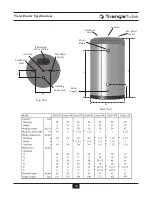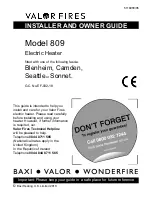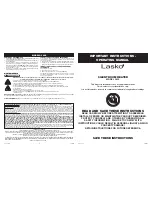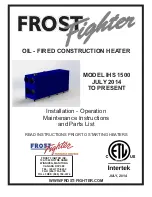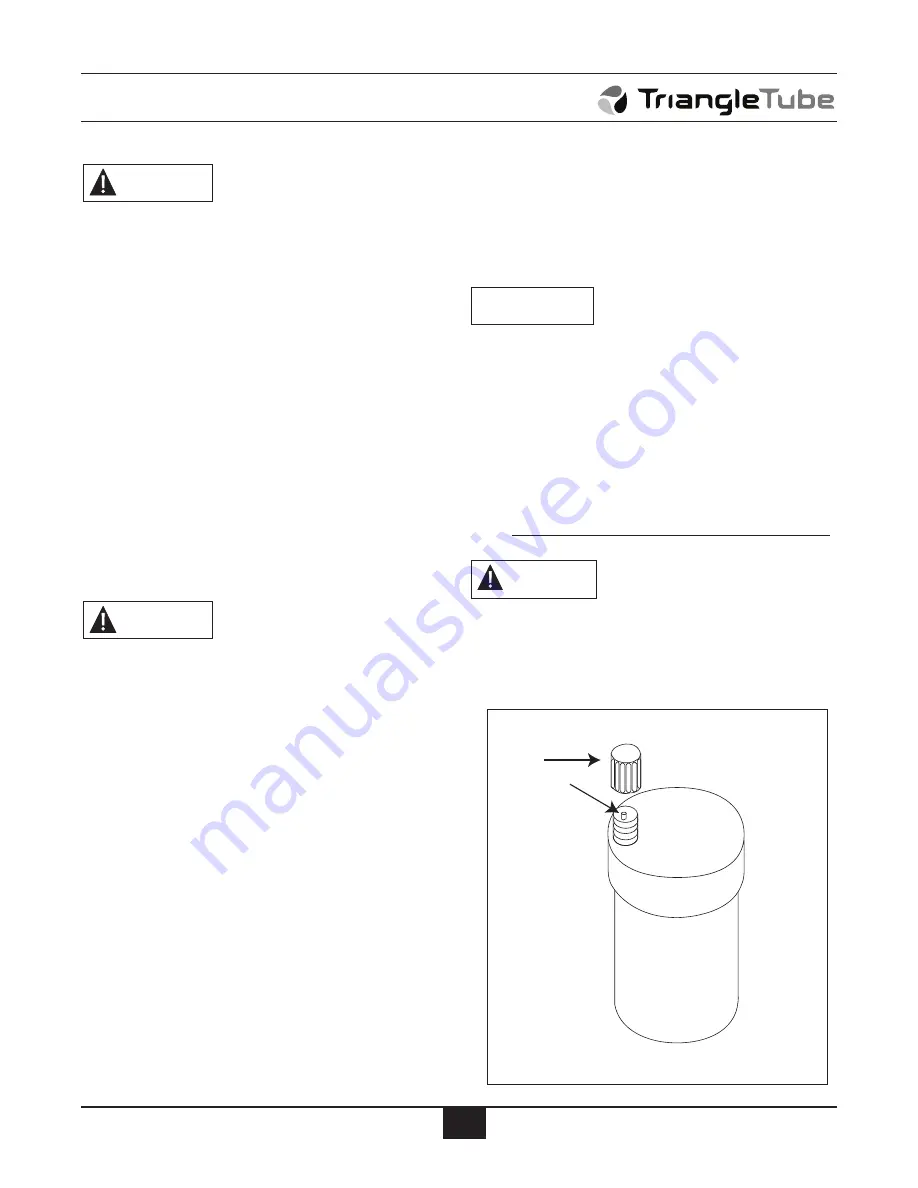
22
Filling the Inner (Domestic Water) Tank
•
Never use water heater unless inner and
outer tanks are completely filled with water.
•
Inner tank must be completely filled and
pressurized before pressurizing outer tank.
1. Close domestic water drain valve.
2. Open domestic water isolation valves for
water heater.
3. Vent air from inner (domestic water) tank by
opening nearest hot water faucet. Fill
domestic water tank completely by allowing
water to run until there is a constant flow of
water.
4. Close hot water faucet.
Filling the Outer (Boiler Water) Tank
•
Never use water heater unless inner and
outer tanks are completely filled with water.
•
Inner tank must be completely filled and
pressurized before pressurizing outer tank.
1. Close boiler water drain valve at boiler water
outlet of water heater.
2. Open water heater’s boiler water isolation
valves.
3. Allow air to escape from outer (boiler water)
tank by opening vent cap A on automatic air
vent, located on top of water heater. See Fig.
19.
4. Follow instructions furnished with boiler to
fill with water.
5. When tank is full, air will stop escaping,
and the automatic air vent will close. If air
vent does not seat properly (water leaks
out), remove cap A. Briefly push in valve B
and release it to clean valve seat. Screw cap
A on completely, See Fig. 19.
For proper operation of the air vent ensure
vent cap is tightened at all times. The air
vent is provided with a hydroscopic cap that
prevents leakage of water due to internal
membrane.
6. If antifreeze is used in boiler water, check
concentration. Boiler water (including addi-
tives) must be practically non-toxic, having
toxicity rating or class of 1, as listed in
Clinical Toxicology of Commercial Products.
Do not use automotive, ethylene glycol or
petroleum-based antifreeze. Do not use any
undiluted antifreeze. This can cause severe
personal injury, death or substantial property
damage.
WARNING
CAUTION
CAUTION
NOTICE
A
B
Automatic Air Vent
Fig. 21:
Water Heater Start-Up























